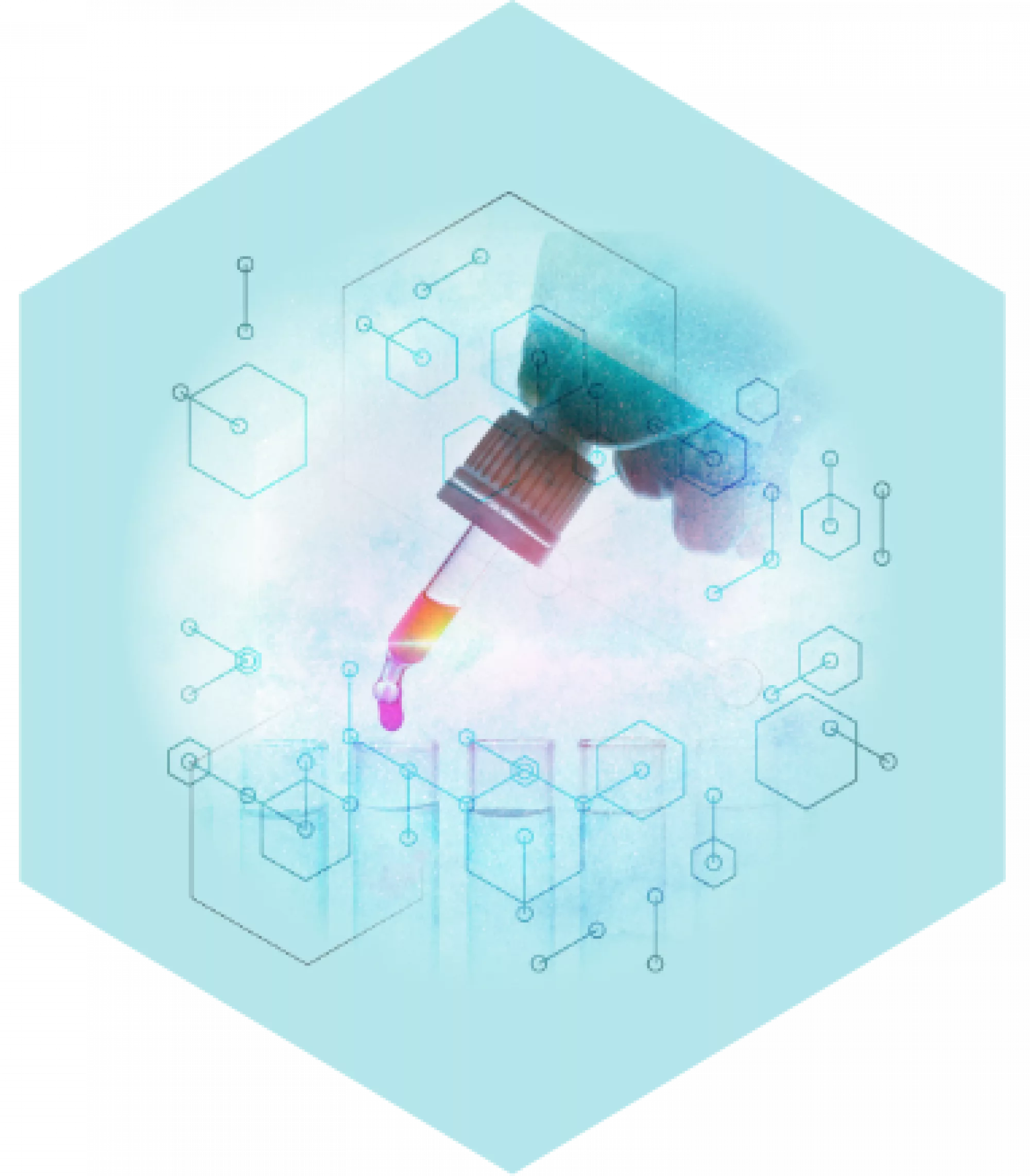Our Focus

Currently, there is a global shortage of MDMA to sustain clinical research. While MDMA is an off- patent molecule, the process development and regulatory burden for the manufacturing of a controlled substance have significantly narrowed the number of manufacturers.
The History of MDMA
Of the many chemicals considered ‘illicit drugs’, MDMA has perhaps the most interesting clinical past. In the 1970s, it was quietly used as a psychotherapeutic drug, with some psychiatrists considering it to improve communication with patients, reportedly allowing users to achieve greater insights into their problems.
In the 1980s MDMA became established as a popular dance drug due to its mood-enhancing properties, primarily the ‘3 E’s’: Energy, Empathy and Euphoria . In 1985, following public outcry about the recreational use of the drug, the methyl-enedioxy and methoxy derivatives of the amphetamines were placed in Schedule 1 of the restricted drugs list in the United States and they are classified similarly in Canada (Schedule III of the Controlled Drugs and Substances Act) and the United Kingdom (Class A under the Misuse of Drugs Act). However, this was not without significant attempts by the psychiatric profession to protect the clinical availability of what they considered to be an important, and potentially life- saving treatment.
Though those initial attempts to protect the clinical availability failed, researchers and scientists remain involved in advocating for the use of MDMA, the largest and most influential group being MAPS. MAPS was founded in 1986 as a direct result of the FDA’s banning of MDMA. Since then, MAPS has collected millions of dollars in donations, and has contributed millions of dollars to scientific research into MDMA, cannabis and other psychedelic chemicals with therapeutic potential. It is largely thanks to their advocacy and funding that as much is known about the therapeutic potential of MDMA.
*The safety and efficacy of MDMA-assisted therapy are currently under investigation. MDMA has not been approved by Health Canada or any other regulatory body.*

MDMA and Psychiatry
Treatment of mental health disorders remains a difficult task. Lack of focus and funding has compounded this. Psychedelic drugs, especially when combined with
psychotherapy provided by an accredited and trained therapist, offer one possible solution.
Spring-boarding off anecdotal and clinical reports from the golden era of psychedelic experimentation from the 1970s and early 1980s, in the past couple of years, the US FDA approved ketamine for treatment-resistant depression¹. In 2019, the US FDA granted breakthrough therapy designations to MDMA -assisted psychotherapy for the treatment of post-traumatic stress disorder² and psilocybin for the treatment of major depressive disorder³.
Interestingly, though these three chemicals are often grouped as ‘hallucinogens,’ their pharmacological effects are different. Ketamine is a dissociative anesthetic which acts on the glutaminergic system⁴˒⁵; psilocybin could be considered a more classical ‘psychedelic’ ⁶⁻⁸ as it works primarily through binding to the 5-HT receptor, whereas MDMA is an ‘entactogen’⁹ working primarily through serotonin norepinephrine and dopamine transporters ⁶˒¹⁰⁻¹².
[1] FDA U. FDA approves new nasal spray medication for treatment-resistant depression; available only at a certified doctor’s office or clinic | FDA. https://www.fda.gov/news-events/press-announcements/fda-approves-new-nasal-spray-medication-treatment-resistant-depression-available-only-certified. Accessed March 20, 2024
[2] FDA Grants Breakthrough Therapy Designation for MDMA-Assisted Therapy for PTSD, Agrees on Special Protocol Assessment for Phase 3 Trials - Multidisciplinary Association for Psychedelic Studies - MAPS. https://maps.org/news/media/press-release-fda-grants-breakthrough-therapy-designation-for-mdma-assisted-psychotherapy-for-ptsd-agrees-on-special-protocol-assessment-for-phase-3-trials/.
[3] Usona Institute | Psilocybin. https://www.usonainstitute.org.... Accessed March
20, 2024
[4] Krystal JH, Abdallah CG, Sanacora G, Charney DS, Duman RS. Ketamine: A Paradigm Shift for Depression Research and Treatment. Neuron. 2019;101(5):774-778. doi:10.1016/j.neuron.2019.02.005
[5] Anis NA, Berry SC, Burton NR, Lodge D. The dissociative anaesthetics, ketamine and phencyclidine, selectively reduce excitation of central mammalian neurones by N‐methyl‐aspartate. Br J Pharmacol. 1983;79(2):565-575. doi:10.1111/j.1476-5381.1983.tb11031.x
[6] Kaur H, Karabulut S, Gauld JW, Fagot SA, Holloway KN, Shaw HE, et al. Balancing Therapeutic Efficacy and Safety of MDMA and Novel MDXX Analogues as Novel Treatments for Autism Spectrum Disorder. Psychedelic Med. 2023;1(3):166-185. doi:10.1089/psymed.2023.0023
[7] Nichols CD, Hendricks PS. Chapter 49 Classic psychedelics as therapeutics for psychiatric disorders. Handb Behav Neurosci. 2020;31:959-966. doi:10.1016/b978-0-444-64125-0.00049-9
[8] Dunlap LE, Andrews AM, Olson DE. Dark Classics in Chemical Neuroscience: 3,4-Methylenedioxymethamphetamine. Acs Chem Neurosci. 2018;9(10):2408-2427. doi:10.1021/acschemneuro.8b00155
[9] Nichols DE. Entactogens: How the Name for a Novel Class of Psychoactive Agents Originated. Front Psychiatry. 2022;13:863088. doi:10.3389/fpsyt.2022.863088
[10] Karabulut S, Kaur H, Gauld JW. Uncovering Structure–Activity Relationships of Phenethylamines: Paving the Way for Innovative Mental Health Treatments. ACS Chem Neurosci. Published online 2024. doi:10.1021/acschemneuro.3c00677
[11] Pitts EG, Curry DW, Hampshire KN, Young MB, Howell LL. (±)-MDMA and its enantiomers: potential therapeutic advantages of R(−)-MDMA. Psychopharmacology. 2018;235(2):377-392. doi:10.1007/s00213-017-4812-5
[12] Nichols DE. Differences Between the Mechanism of Action of MDMA, MBDB, and the Classic Hallucinogens. Identification of a New Therapeutic Class: Entactogens. J Psychoactive Drugs. 1986;18(4):305-313. doi:10.1080/02791072.1986.10472362
What we do
PharmAla works with established, best-in-class laboratories across Canada to develop novel processes for the supply of LaNeo™ MDMA and other MDXX substances. We hold ourselves to the highest standards of compliance and rigour in our sourcing processes. Our Research and Development team is engaged in preclinical research on 2 of our novel chemical entities, with the goal of increasing the safety of LaNeo™ MDMA and its analogs.

Our Business Lines
